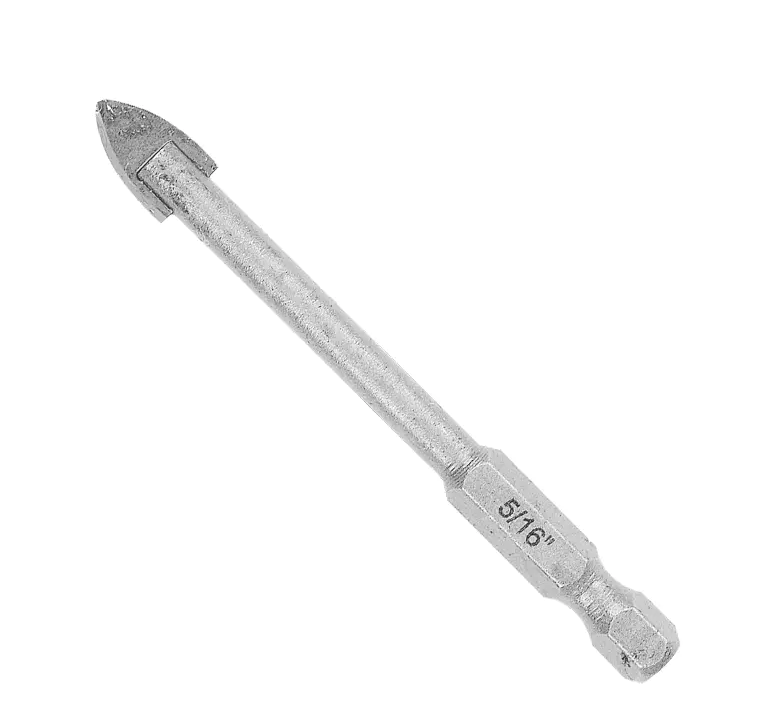Exploring the Differences Between Glass Drill Bits and Conventional Drill Bits

In the realm of drilling applications, the choice of drill bit can make a significant difference in the efficiency and outcome of the task. One specialized type of drill bit that has gained attention is the Glass Drill Bit. This article aims to delve into the distinctions between Glass Drill Bits and traditional, or conventional, drill bits, highlighting their unique characteristics and applications.
First and foremost, the design of a Glass Drill Bit is inherently different from that of a standard drill bit. Glass Drill Bits are specifically engineered to make clean, precise cuts in glass without causing the material to crack or shatter. They are often designed with a diamond-tipped or tungsten carbide tip, which is harder and more resistant to wear than the high-speed steel or cobalt found in conventional drill bits. This specialized tip allows the Glass Drill Bit to maintain its sharpness and durability when interacting with the hard and brittle nature of glass.
In contrast, standard drill bits are not optimized for glass and can quickly dull or break when used on this material. The material composition of Glass Drill Bits plays a crucial role in their performance. Diamond-tipped Glass Drill Bits, for instance, provide an unmatched level of precision and longevity due to the hardness of diamond, which is the hardest known natural material. This attribute is particularly beneficial when working on tempered or laminated glass, where the risk of breakage is higher.
Another key difference lies in the drilling technique required for each type of drill bit. When using a Glass Drill Bit, it is essential to apply steady, even pressure and maintain a slow, controlled drilling speed to prevent the glass from cracking. This technique contrasts with the higher speeds and varying pressures that are often employed when using standard drill bits on materials such as wood or metal.
The heat generated during the drilling process is another area where Glass Drill Bits and standard drill bits differ significantly. Glass is sensitive to heat, and excessive heat can cause it to crack or break. Glass Drill Bits are designed to minimize heat generation, often through the use of water or oil-based cooling lubricants. Standard drill bits, on the other hand, may not have this feature, which can lead to an increased risk of damage when drilling glass.
The geometry of the drill bits also plays a role in their performance. Glass Drill Bits are often cone-shaped or have a conical point, which helps to center the bit and reduce the risk of the bit walking across the glass surface. This design is less common in standard drill bits, which are typically cylindrical and may not provide the same level of precision when drilling into glass.
In terms of cost, Glass Drill Bits are generally more expensive than their standard counterparts due to the specialized materials and design. However, the investment can be justified by the superior performance and longevity that they offer when working with glass.
Maintenance and storage of Glass Drill Bits also differ from those of standard drill bits. Due to their delicate nature and the importance of keeping the tip sharp, Glass Drill Bits require careful storage and regular inspection for any signs of wear or damage. Standard drill bits, while they also require maintenance, may not have the same level of sensitivity to storage conditions.
In conclusion, the differences between Glass Drill Bits and standard drill bits are numerous and significant. From their material composition and design to their application techniques and maintenance requirements, Glass Drill Bits is a specialized tool that offers unparalleled performance when working with glass. Understanding these distinctions is crucial for anyone involved in glasswork, ensuring both the safety of the operator and the integrity of the glass being worked on.
Product Advantages
1. Hex Shank Design: The hexagonal shank provides a secure grip, preventing slippage during high-speed operations with electric drills and impact drivers.
2. Durable Material: Crafted from high-performance materials, the drill exhibits remarkable durability and an extended lifespan.
3. Precision and Efficiency: The drill's efficient design facilitates smooth drilling operations, reducing effort and improving overall productivity.
- Art
- Causes
- Crafts
- Dance
- Drinks
- Film
- Fitness
- Food
- Games
- Gardening
- Health
- Home
- Literature
- Music
- Networking
- Other
- Party
- Religion
- Shopping
- Sports
- Theater
- Wellness


